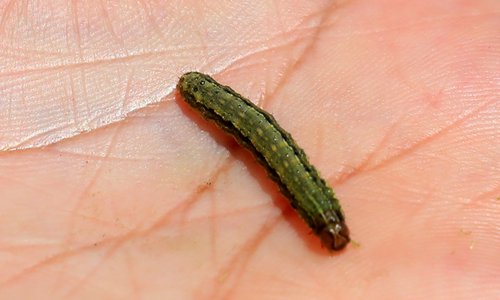HOME >> CHINA
China makes big step to control fall armyworm crop pest
By Chen Xi Source:Global Times Published: 2019/6/19 22:21:00

Fall armyworm. Photo: IC
China's research team has made a breakthrough in dealing with the crop-destroying pest fall armyworm (FAW), which has seriously threatened the safety of China's agriculture and food production.
The team sequenced and assembled the pest's gene and put the assembled gene fragments to the pest's corresponding chromosomal locations, according to a document of the BGI group, a genome sequencing company in China, sent to the Global Times on Wednesday.
"The research of gene sequencing and assembly of the FAW is crucial to further studying the pest's pesticide resistance and long-term prevention and control," the document said.
The research team spent 25 days on the project.
FAW poses a serious threat to the safety of agricultural and food production in China because it is resistant to pesticides, and no registered pesticide has proven effective in killing the pest in China, the Beijing News reported on Wednesday.
The pest has been discovered in 18 provinces and regions, including South China's Hainan Province, Central China's Hubei Province and Hunan Province, and continues to move northward, according to the website of China's Ministry of Agriculture and Rural Affairs on June 13.
The pest has also damaged crops in nearly 100 countries and regions, reports said.
There was difficulty in trying to transform the research results to actual prevention and control measures. We will continue to study the insect's resistance to different pesticides,the BGI group said.
It said that they are planning to study the migration route of the FAW from southeast Asian countries to China, and help predict and prevent it from invading more important agricultural areas in China, including Northeast China's Heilongjiang Province and Central China's Henan Province.
The genomic data has been uploaded to the data platform of China's National Gene Bank and can be used by researchers all over the world.
The FAW was first spotted in Yunnan Province in January, and China's Ministry of Agriculture and Rural Affairs issued a notice in December 2018 to intensely monitor the pest, and instructed Yunnan and other provinces to draw up preventive and control measures.
RELATED ARTICLES:
Posted in: SOCIETY